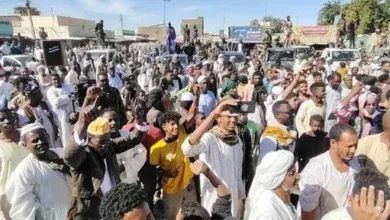Despite the war, Sudanese dams are doing well – The face of truth – ✍️ Ibrahim Shaqlawi

Given the concern expressed by some observers about the state of Sudan's dams due to the war that has been raging in the country since mid-April last year by the rebels of the Rapid Support Forces, who attempted to seize power through a regionally supported military coup. . with the support of some internal political forces… it is known that Sudan has five main dams on the Nile, from highest to lowest, including the Setit Dam and the Upper Atbara Dam on two subsidiary rivers… and the Roseires Dam on the Blue Nile… and the Sennar reservoir on the Blue Nile, then the Jebel Awliya reservoir on the White Nile, then the Merowe Dam on the main Nile… this is in addition to the dams. small reservoirs spread across several Sudanese states, known as water harvesting dams. They total about 450 dams or pits and are designed to good standards to preserve rainwater in autumn in order to benefit from it during periods of drought, which affect many regions. The Sudanese countryside is known for watering humans, animals and agriculture during these periods. As for the main Sudanese dams, the situation is reassuring and there are no significant threats, because they are located far from areas of conflict and direct clashes. and they are in areas under the control of the Sudanese army, which secures and protects them and secures those who work to access them, those who carry out their functions related to operation and management… with the required efficiency. or reservoir located in areas under the control of rebel forces is the Jabal Awliya reservoir… where a number of citizens and observers have recently expressed their fear of the collapse of this reservoir due to the war… with reference to the recommendation of researchers from the Dutch Water Centre in Delft, who stressed the need to pay attention to the increasing risks that threaten dams in Sudan… especially those located in areas controlled by the rebel rapid support forces, such as the Jebel Awlia. reservoir, which is located south of the capital, Khartoum… after it became out of control and control for… For the workers who manage the reservoir… due to the lack of security in the area… which leads to difficulties in coordinating flood control operations due to management and communications difficulties… and the lack of workers… according to our follow-ups with several experts and engineers specializing in the field of dam management and operation, conditions, as they said, are very reassuring in all Sudanese dams, even in the area of the Jebel Awlia reservoir, which is under the control of the rebel forces. From this, it can be said that all Sudanese dams are doing well. that the Jebel Awlia reservoir is also located on the White Nile. We mentioned that it is located 44 kilometers (27.3 miles) south of the capital, Khartoum. It was established in 1937 and has remained under the technical and administrative supervision of the Egyptian. government, which built it in Sudan in accordance with an agreement between the two governments until its importance to Egypt disappeared after the establishment of the High Dam, and it was handed over to the government of Sudan in 1977 AD, to be used to increase the water level in the areas in front of and behind the dam body so that the White Nile agricultural projects and some other projects in a number of areas could be irrigated. It is therefore important to say, according to experts and specialized engineers: that the Jabal Awlia reservoir is currently in good condition despite the fact that it has been under the control of rebel forces since October last year… but what is reassuring is that the existing openings for the passage of water are quite sufficient to accommodate any sudden increase in the amount of water. levels, given that the rainy and flood season has begun to leave its peak… which begins from mid-July to mid-September. The stage of potential risks resulting from any flooding of the White Nile is therefore exceeded. The flow of water through the sluice gates is also proceeding well and normally according to the rhythms known and accepted at this time of year. It is also important to emphasize that the storage capacity of three billion cubic meters is stable and there is no provision for it. It is also known that the control and operating systems of all Sudanese dams are interconnected with great efficiency. It should also be recalled that, according to current levels, the existing capacity is two billion five hundred cubic meters. a threat… to the safety of the tank… As for the possibility of a collapse due to possible threats related to military operations, it is out of the question given the presence of earth embankments capable of absorbing possible shocks… Perhaps there are challenges related to the problem of the bridge on the roof of the tank, which is 18 meters long in the middle of the tank, which is locked and open for the passage of vehicles. His orders have become uncontrollable because of this. to the presence of rebel forces. As for the doors under the tank, they are closed and there is no danger from them. In general, based on the reality of monitoring, investigation and listening to engineers and experts, it becomes. It is clear that there is no danger from the side of the Jabal Awliya tank at the moment, given the period when the peak of the floods has passed. Also, based on our follow-ups with a number of experts and specialists, we can say that the Sudanese. The dams are doing well despite the war. Therefore, the face of the truth remains in the importance of strengthening the protection of the Jebel Awlia dam by the rebel forces present there, just as other Sudanese dams are protected by the Sudanese army. places under its control… considering that national civilian installations benefit all Sudanese without exception… and have nothing to do with the war or its motivations… Therefore, we call on all local and international bodies to stress the importance of taking these civilian installations out of the circle of war… and to work to encourage them. The forces will protect them and facilitate the passage of their workers in order to exploit and preserve them… in accordance with the regulations in force locally, at the regional and international levels.
May you always be well..
Friday, September 20, 2024 AD. (email protected)






